A national park is a natural park in use for conservation purposes, created and protected by national governments. Often it is a reserve of natural, semi-natural, or developed land that a sovereign state declares or owns. Although individual nations designate their own national parks differently, there is a common idea: the conservation of 'wild nature' for posterity and as a symbol of national pride.
 |
| Gran Paradiso National Park, Piedmont, Italy |
The United States established the first "public park or pleasuring-ground for the benefit and enjoyment of the people", Yellowstone National Park, in 1872. Although Yellowstone was not officially termed a "national park" in its establishing law, it was always termed such in practice and is widely held to be the first and oldest national park in the world. However, the Tobago Main Ridge Forest Reserve (in what is now Trinidad and Tobago; established in 1776), and the area surrounding Bogd Khan Uul Mountain (Mongolia, 1778), which were restricted from cultivation in order to protect surrounding farmland, are seen as the oldest legally protected areas.
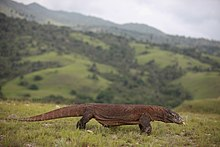 |
| Komodo National Park, East Nusa Tenggara, Indonesia |
An international organization, the International Union for Conservation of Nature (IUCN), and its World Commission on Protected Areas (WCPA), has defined "National Park" as its Category II type of protected areas. According to the IUCN, 6,555 national parks worldwide met its criteria in 2006. IUCN is still discussing the parameters of defining a national park. National parks are almost always open to visitors.
 |
| Koli National Park in North Karelia, Finland |
Definition
In 1969, the IUCN declared a national park to be a relatively large area with the following defining characteristics :
- One or several ecosystems not materially altered by human exploitation and occupation, where plant and animal species, geomorphological sites and habitats are of special scientific, educational, and recreational interest or which contain a natural landscape of great beauty;
- Highest competent authority of the country has taken steps to prevent or eliminate exploitation or occupation as soon as possible in the whole area and to effectively enforce the respect of ecological, geomorphological, or aesthetic features which have led to its establishment; and
- Visitors are allowed to enter, under special conditions, for inspirational, educative, cultural, and recreative purposes.
 |
| Manuel Antonio National Park in Costa Rica |
In 1971, these criteria were further expanded upon leading to more clear and defined benchmarks to evaluate a national park. These include :
- Minimum size of 1,000 hectares within zones in which protection of nature takes precedence
- Statutory legal protection
- Budget and staff sufficient to provide sufficient effective protection
- Prohibition of exploitation of natural resources (including the development of dams) qualified by such activities as sport, hunting, fishing, the need for management, facilities, etc.
While the term national park is now defined by the IUCN, many protected areas in many countries are called national park even when they correspond to other categories of the IUCN Protected Area Management Definition, for example :
- Swiss National Park, Switzerland: IUCN Ia - Strict Nature Reserve
- Everglades National Park, United States: IUCN Ib - Wilderness Area
- Koli National Park, Finland: IUCN II - Surface Area
- Victoria Falls National Park, Zimbabwe: IUCN III - National Monument
- Vitosha National Park, Bulgaria: IUCN IV - Habitat Management Area
- New Forest National Park, United Kingdom: IUCN V - Protected Landscape
- Etniko Ygrotopiko Parko Delta Evrou, Greece: IUCN VI - Managed Resource Protected Area
 |
| New Forest National Park, Hampshire, England |
While national parks are generally understood to be administered by national governments (hence the name), in Australia, with the exception of six national parks, national parks are run by state governments and predate the Federation of Australia; similarly, national parks in the Netherlands are administered by the provinces.[9] In Canada, there are both national parks operated by the federal government and provincial or territorial parks operated by the provincial and territorial governments, although nearly all are still national parks by the IUCN definition.
In many countries, including Indonesia, the Netherlands, and the United Kingdom, national parks do not adhere to the IUCN definition, while some areas which adhere to the IUCN definition are not designated as national parks.
 |
| Yosemite National Park, in California, United States |
Terminology
As many countries do not adhere to the IUCN definition, the term “national park” may be used loosely. In the United Kingdom, and in some other countries such as Taiwan, a “national park” simply describes a general area that is relatively undeveloped, scenic, and attracts tourists. There may be substantial human settlements within the bounds of a national park. Conversely, parks that meet the criteria may be not be referred to as “national parks”. Terms like “preserve” or “reserve” may be used instead.
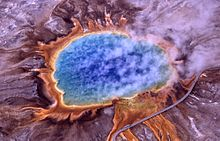 |
| Grand Prismatic Spring in Yellowstone National Park |
History
Early references
Starting in 1735 the Naples government undertook laws in order to protect Natural areas, which could be used as a game reserve by the royal family; Procida was the first protected site; the difference between the many previous royal hunting preserves and this one, which is considered to be closer to a Park rather than a hunting preserve, is that Neapolitan government already considered the division into the present-day wilderness areas and non-strict nature reserves.
 |
| Bromo Tengger Semeru National Park, East Java, Indonesia |
In 1810, the English poet William Wordsworth described the Lake District as a "sort of national property, in which every man has a right and interest who has an eye to perceive and a heart to enjoy." The painter George Catlin, in his travels through the American West, wrote during the 1830s that Native Americans in the United States might be preserved "(by some great protecting policy of government) ... in a magnificent park ... A nation's Park, containing man and beast, in all the wild and freshness of their nature's beauty!"
 |
| Royal National Park, New South Wales, Australia |
First efforts : Hot Springs, Arkansas and Yosemite Valley
The first effort by the U.S. Federal government to set aside such protected lands was on 20 April 1832, when President Andrew Jackson signed legislation that the 22nd United States Congress had enacted to set aside four sections of land around what is now Hot Springs, Arkansas, to protect the natural, thermal springs and adjoining mountainsides for the future disposal of the U.S. government. It was known as Hot Springs Reservation, but no legal authority was established. Federal control of the area was not clearly established until 1877. The work of important leaders who fought for animal and land conservation were essential in the development of legal action. Some of these leaders include President Abraham Lincoln, Laurance Rockefeller, President Theodore Roosevelt, John Muir, and First Lady, Lady Bird Johnson to name a few.
 |
| Lago Covel in the Stelvio National Park, Italy |
President Abraham Lincoln signed an Act of Congress on 1 July 1864, ceding the Yosemite Valley and the Mariposa Grove of giant sequoias (later becoming Yosemite National Park) to the state of California. According to this bill, private ownership of the land in this area was no longer possible. The state of California was designated to manage the park for "public use, resort, and recreation". Leases were permitted for up to ten years and the proceeds were to be used for conservation and improvement. A public discussion followed this first legislation of its kind and there was a heated debate over whether the government had the right to create parks. The perceived mismanagement of Yosemite by the Californian state was the reason why Yellowstone was put under national control at its establishment six years later.
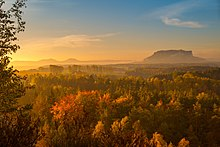 |
| Saxon Switzerland National Park after sunrise |
First national park : Yellowstone
In 1872, Yellowstone National Park was established as the United States' first national park, being also the world's first national park. In some European and Asian countries, however, national protection and nature reserves already existed - though typically as game reserves and recreational grounds set aside for royalty, such as a part of the Forest of Fontainebleau (France, 1861).
 |
| Yellowstone National Park |
Yellowstone was part of a federally governed territory. With no state government that could assume stewardship of the land, the federal government took on direct responsibility for the park, the official first national park of the United States. The combined effort and interest of conservationists, politicians and the Northern Pacific Railroad ensured the passage of enabling legislation by the United States Congress to create Yellowstone National Park. Theodore Roosevelt and his group of conservationists, the Boone and Crockett Club, were active campaigners and were highly influential in convincing fellow Republicans and big business to back the bill. Yellowstone National Park soon played a pivotal role in the conservation of these national treasures, as it was suffering at the hands of poachers and others who stood at the ready to pillage what they could from the area. Theodore Roosevelt and his newly formed Boone and Crockett Club successfully took the lead in protecting Yellowstone National Park from this plight, resulting in laws designed to conserve the natural resources in Yellowstone and other parks under the Government's purview.
 |
| Teufelsschloss in Kaiser-Franz-Joseph-Fjord, East Greenland. |
International growth of national parks
The first area to use "national park" in its creation legislation was the U.S.'s Mackinac National Park, in 1875. (The area was later transferred to the state's authority in 1895, thus losing its official "national park" status.
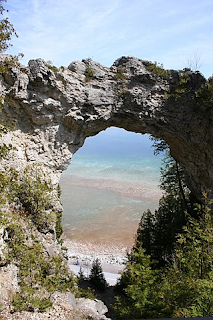 |
| Mackinac National Park |
Following the idea established in Yellowstone and Mackinac, there soon followed parks in other nations. In Australia, what is now Royal National Park was established just south of Sydney, Colony of New South Wales, on 26 April 1879, becoming the world's second official national park Since Mackinac lost its national park status, the Royal National Park is, by some considerations, the second oldest national park now in existence.
 |
| Royal National Park |
Banff National Park became Canada's first national park in 1885. New Zealand established Tongariro National Park in 1887.
 |
| Banff National Park |
In Europe, the first national parks were a set of nine parks in Sweden in 1909, followed by the Swiss National Park in 1914. Africa's first national park was established in 1925 when Albert I of Belgium designated an area of what is now Democratic Republic of Congo centred on the Virunga Mountains as the Albert National Park (since renamed Virunga National Park). In 1926, the government of South Africa designated Kruger National Park as the nation's first national park, although it was an expansion of the earlier Sabie Game Reserve established in 1898 by President Paul Kruger of the old South African Republic, after whom the park was named. Argentina became the third country in the Americas to create a national park system, with the creation of the Nahuel Huapi National Park in 1934, through the initiative of Francisco Moreno.
 |
| Nahuel Huapi National Park |
After World War II, national parks were founded all over the world. The United Kingdom designated its first national park, Peak District National Park, in 1951. This followed perhaps 70 years of pressure for greater public access to the landscape. By the end of the decade a further nine national parks had been designated in the UK. Europe has some 359 national parks as of 2010. The Vanoise National Park in the Alps was the first French national park, created in 1963 after public mobilization against a touristic project.
 |
| Vanoise National Park |
In 1971, Lahemaa National Park in Estonia was the first area to be designated a national park in the former Soviet Union.
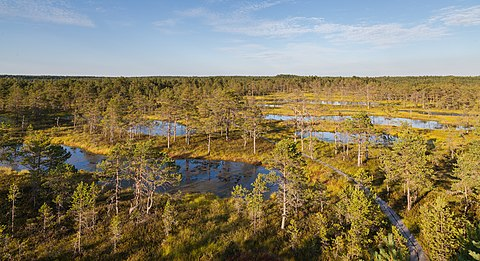 |
| Lahemaa National Park |
In 1973, Mount Kilimanjaro was classified as a National Park and was opened to public access in 1977.
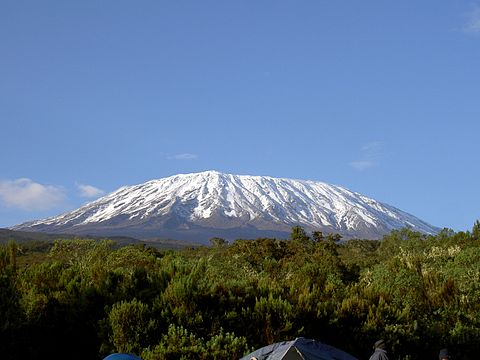 |
| Mount Kilimanjaro |
In 1989, the Qomolangma National Nature Preserve (QNNP) was created to protect 3.381 million hectares on the north slope of Mount Everest in the Tibet Autonomous Region of China. This national park is the first major global park to have no separate warden and protection staff - all of its management being done through existing local authorities, allowing a lower cost basis and a larger geographical coverage (in 1989 when created, it was the largest protected area in Asia). It includes four of the six tallest mountains in the world: Everest, Lhotse, Makalu, and Cho Oyu. The QNNP is contiguous to four Nepali national parks, creating a transborder conservation area equal in size to Switzerland.
 |
| Mount Everest |
National parks services
The world's first national park service was established May 19, 1911, in Canada. The Dominion Forest Reserves and Parks Act placed the dominion parks under the administration of the Dominion Park Branch (now Parks Canada), within the Department of the Interior. The branch was established to "protect sites of natural wonder" to provide a recreational experience, centred on the idea of the natural world providing rest and spiritual renewal from the urban setting. Canada now has the largest protected area in the world with 450,000 km2 of national park space.
 |
| A Parks Canada Park Warden badge |
Even with the creation of Yellowstone, Yosemite, and nearly 37 other national parks and monuments, another 44 years passed before an agency was created in the United States to administer these units in a comprehensive way – the U.S. National Park Service (NPS). The 64th United States Congress passed the National Park Service Organic Act, which President Woodrow Wilson signed into law on 25 August 1916. Of the 423 sites managed by the National Park Service of the United States, only 63 carry the designation of National Park.
 |
| National Park Service arrowhead insignia |
Notable parks
The largest national park in the world meeting the IUCN definition is the Northeast Greenland National Park, which was established in 1974 and is 972,000 km2 (375,000 sq mi) in area.
The smallest official national park in the world is Isles des Madeleines National Park. Its area of just 0.45 square kilometres (0.17 sq mi) was established as a national park in 1976.
 |
| Isles des Madeleines National Park. |
Economic ramifications
Countries with a large ecotourism industry (Ecotourism is a form of tourism involving responsible travel to natural areas, conserving the environment, and improving the well-being of the local people), such as Costa Rica, often experience a huge economic effect on park management as well as the economy of the country as a whole.
 |
| Llano del Muerto waterfall in El Salvador |
Tourism
Tourism to national parks has increased considerably over time. In Costa Rica for example, a megadiverse country, tourism to parks has increased by 400% from 1985 to 1999. The term national park is perceived as a brand name that is associated with nature-based tourism and it symbolizes a "high quality natural environment with a well-designed tourist infrastructure".
 |
| The 17 countries identified as megadiverse by Conservation International |
Staff
The duties of a park ranger are to supervise, manage, and/or perform work in the conservation and use of park resources. This involves functions such as park conservation; natural, historical, and cultural resource management; and the development and operation of interpretive and recreational programs for the benefit of the visiting public. Park rangers also have fire fighting responsibilities and execute search and rescue missions. Activities also include heritage interpretation to disseminate information to visitors of general, historical, or scientific information. Management of resources such as wildlife, lake shores, seashores, forests, historic buildings, battlefields, archaeological properties, and recreation areas are also part of the job of a park ranger. Since the establishment of the National Park Service in the US in 1916, the role of the park ranger has shifted from merely being a custodian of natural resources to include several activities that are associated with law enforcement. They control traffic, manage permits for various uses, and investigate violations, complaints, trespass/encroachment, and accidents.
 |
| Park Ranger |
Criticisms
While national parks are often seen as positive environmental service, many authors have discussed the darker side of its history. National parks were created by individuals who felt that pristine, natural sections of nature should be set aside and preserved from urban development. In America, this movement came about during the Great American Frontier and were meant to be monuments to America’s true history. Yet the lands that were to be set aside and protected were already being inhabited by native communities, who were removed and set aside to create ″pristine″ sites for public consumption. Critics claim that the removal of people from national parks enhanced the belief that nature can only be protected when humans do not exist within it, and that this leads to perpetuating the dichotomy between nature and humans (also known as the nature - culture divide). They see creation of national parks as a form of eco-land grabbing. Others claim that travelling to national parks to appreciate nature there leads people to ignore the nature that exists around them every day. Some argue that tourism can actually negatively impact the areas that are being visited.

No comments:
Post a Comment